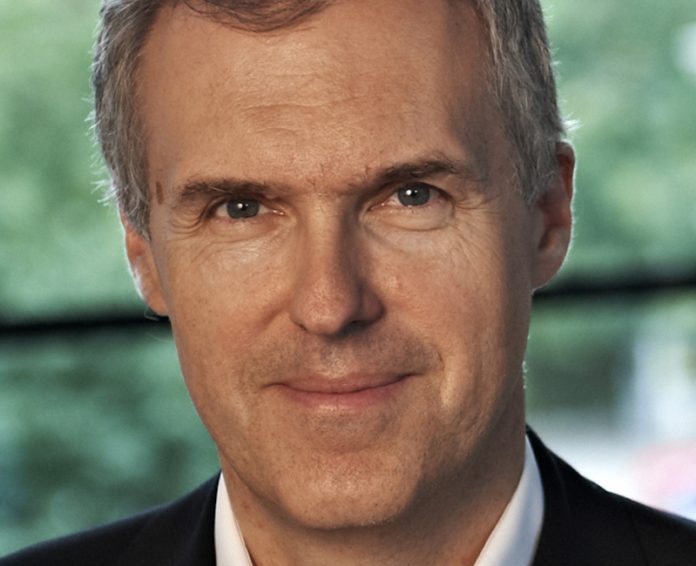
Ideas for change
Perspectives at the interface between art and the creative industries
— Christoph Thun-Hohenstein
Are the creative industries inspired by art an engine for growth on the path to a post-human, exponential enhancement society or to an increase in quality characterised by humanism?
The question may appear unusual, but in its pointedness, it at the same time provides a basis in order to illustrate the key potential of art and the creative industries- and thus of the artists and creatives – in promoting positive change. Anyone hoping for clear definitions of art and the creative industries will be disappointed, however, since the boundaries are fluid (which can also be regarded as being an advantage).¹
In this context, mention should also be made of the difference between “high” fine art, which is free with regard to its content and which is not required to be of immediate use, and applied art, such as fashion, design and architecture, which is functional and utilitarian, and therefore more closely connected to everyday life. As can be expected, fine art provides impulses to the creative industries in terms of content, but it is encouraging to see the inspiration flowing just as abundantly in the other direction.
We are currently not living in a period of business as usual, however, but at the start of a new modern age, which is dominated by all-embracing digitalisation and therefore also by an exponential enhancement dynamic. There are certain catchwords in circulation that give us a clear idea of the direction in which we are heading: big data, predictive algorithms, the Internet of Things, measurement of the digital economy and surveillance (the “glass human being”), robotics, super-intelligence, human enhancement/intellectual amplification, singularity, virtual reality, augmented reality and mixed reality, nanotechnology, digitally driven genetics and synthetic biology in the sense of the targeted manufacture of new organisms, and the Internet of Everything – not to mention the playgrounds for cyber-criminality² that they engender. In contrast to the last western modern age, which extended from the beginning of industrialisation until late in the 20th century, today, we are facing an almost explosive period of instant modernity, which even goes so far as to call into question the future of humanity itself.
There is no doubt that aside from major risks such as the automation of manual and intellectual human work worldwide, digitalisation also offers huge potential, such as in education. Its true qualities will be measured primarily in terms of how it transforms humans in society in the digital modern age, how it will enable inclusion, reduce the chasm between the rich and the poor, resolve intensifying conflicts between the generations and counteract climate change.
A new era demands new approaches. In light of the decrease in the public sector budget, top-down control is becoming less important, with new types of opportunity for action arising for bottom-up initiatives. Currently, it is the start-up culture, the global glamorisation of which began and continues to emanate from Silicon Valley, which is the most trusted form of exploiting the opportunities for growth offered by the digital modern age, and thus securing prosperity for the future. This cult should not lead one to the conclusion, however, that promotion of start-ups, regardless of their content, will automatically lead to positive change. Start-ups are characterised by two features: innovation and the potential for rapid growth, neither of which provides any information regarding the direction of the changes triggered by start-ups, however. In other words: business models that are spurred on by digitalisation can lead to positive and/or negative change. Start-ups are best able to develop their positive potential when they are fuelled by qualified social expectations that are not (only) impressed by profits made, but also in particular by a high degree of common benefit. It becomes all the more important to examine the content of their activity when the current investment philosophy in Silicon Valley, propagated specifically by Peter Thiel, (and the centres of innovation in China have a similar view), preaches the creation of decades-long monopolies instead of fostering competition. A future situation in which a small number of digital monopolies³ conducts global business in different areas of life, while avoiding paying taxes, can neither be in the interest of politics nor of small- and medium-sized businesses, and certainly not of society. Quite the contrary: long-term quality of life must be secured on the basis of regional diversity and common values. In this sense, we need strong re-decentralisation of the Internet to offset the global winner-takes-all situation.
It is no accident that many start-ups can be classified as being part of the creative industries, since creatives (but specifically also younger artists) are frequently associated with the following, in addition to their creativity: innovation, flexibility, networking, cooperation, resilience, resonance, knowledge intensity/transfer, affinity with technology, customer orientation and internationality. These are excellent prerequisites. In order to move the world in a positive direction in the long term, high quality standards must also be met with regard to the content of their activity.
As significant movements of an earlier modern age, such as Bauhaus in Germany, have shown, in times of fundamental upheaval, it is not only new forms that are important, but above all new content, indeed, the search for the new human. A future life worth living can today only be forged through a holistic approach, in other words, every positive partial contribution must harmonise with the whole, and be compatible with partial contributions in other areas.
The digital age has currently opened up a window of opportunity for human creativity, with no-one knowing how long it will stay open. Precisely in light of the all-encompassing digitalisation, it is creativity that cannot be predetermined in advance that is emerging as the quality that separates us humans from computers and other machines. In the future, human creativity, at a time when the Internet of Things is experiencing an almost unimaginable dynamic, for example,–must still be granted sufficient space. With a view to the necessity of resonance4 , which has masterfully been described by the German sociologist Hartmut Rosa, artists and creatives in turn appear to be particularly highly suited to transforming the many silent global connections into resonant ones. They are therefore bearers of hope, who combine creativity and innovation in order to develop model initiatives and activities for a sustainable, resonant digital modern age that is oriented to the common good. An enlightened new modern age, in which growth completes a process of positive change from the quantitative enhancement dynamic of our current throwaway society to a circular economy and growth in quality! An age in which the digital megalomania, and the merging of human and machine that is so eagerly anticipated in many places, is overcome, with progress being made towards a humanistic community of values!
The current euphoria that justifiably surrounds “bottom-up” therefore enables artists and creatives to become bio-activist, regardless of whether they regard themselves as start-ups, (other) types of business people, social entrepreneurs or other moderators for positive change – whereby here, “bio” refers to creative engagement in relation to the role of humans in the digital society in particular. We need artists and creatives to produce a new digital humanism, and therefore as pioneers of an enlightened, socially responsible form of digital citizenship. We expect them to provide a new vision for the mainstream of tomorrow (to overcome the angry society of today) – not least through the friction between art and the creative industries. The success of this artwork requires a constructive approach on the part of the public sector, which not only permits meaningful bottom-up activities, but which cleverly promotes, fuels and supports them.
Austria offers the best framework conditions for becoming a type of model region of an enlightened digital modern age. Increasingly innovative, yet committed to stable values, it is a compact, cosmopolitan, democratic country, embedded in the EU, with a strong export economy in which art and culture enjoy a higher status than ever before. The door to a new, digital, Viennese modern age, which is enriched to a considerable extent by art and the creative industries, is wide open.
The author
Christoph Thun-Hohenstein (born 1960) has been Director of the MAK – the Austrian museum for applied art/contemporary art – since 1 September 2011. He held overseas posts in Abidjan, Geneva and Bonn as an employee of the Austrian Federal Ministry of Foreign Affairs. From 1999 to 2007, he was Director of the Austrian Cultural Forum New York, before becoming managing director of departure, the creative centre of the Vienna Business Agency. Christoph Thun-Hohenstein has published work on European integration in particular, as well as on topics related to contemporary culture and art, and has also given numerous lectures in these areas. He has curated contemporary art exhibitions and regularly works as a jury member.
1 Before joining MAK, I myself headed departure, the creative centre of the Vienna Business Agency, from 2007 to 2011, which was founded in 2003 in Vienna as the first Austrian institution for promoting the creative industries in the form of support for the commercial use of innovative and creative output. The following fields were covered: the music industry, architecture, literature/publishing, print media, audiovisual art, fine art and the art market, fashion, design, graphic design, multimedia, software, games, Internet, and even so-called "Services for Creative Industries”. In contrast to departure, the Kreativwirtschaft Austria also counts advertising and the "market for performing art" among the creative industries, but not fine art and the art market. 2 Cf. e.g. Marc Goodman: Inside the Digital Underground and the Battle for Our Connected World, London: Future Crimes 2015. 3Cf.Peter Thiel (with Blake Masters): Notes on Start-ups, or How to Build the Future, New York: Zero to One 2014. 4 Cf. Hartmut Rosa: Eine Soziologie der Weltbeziehung, Berlin: Resonanz 2016.











